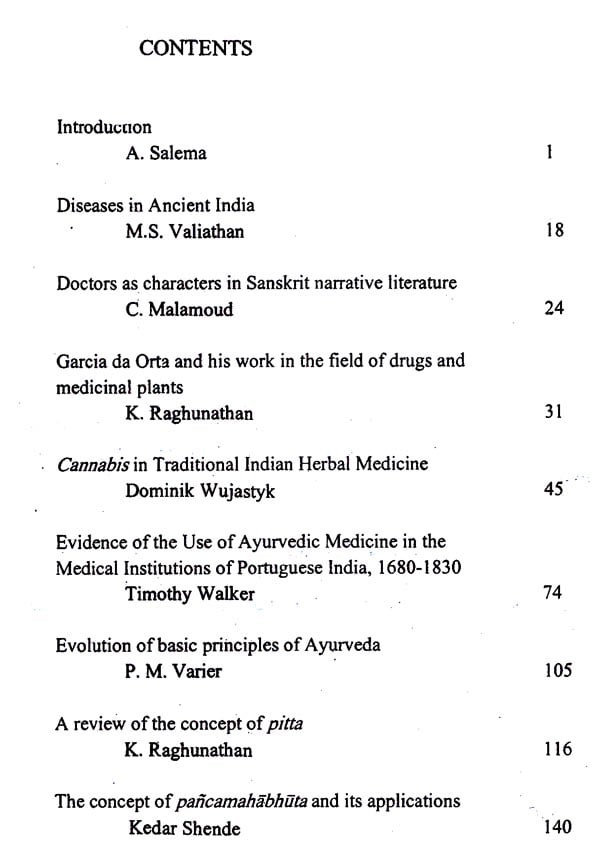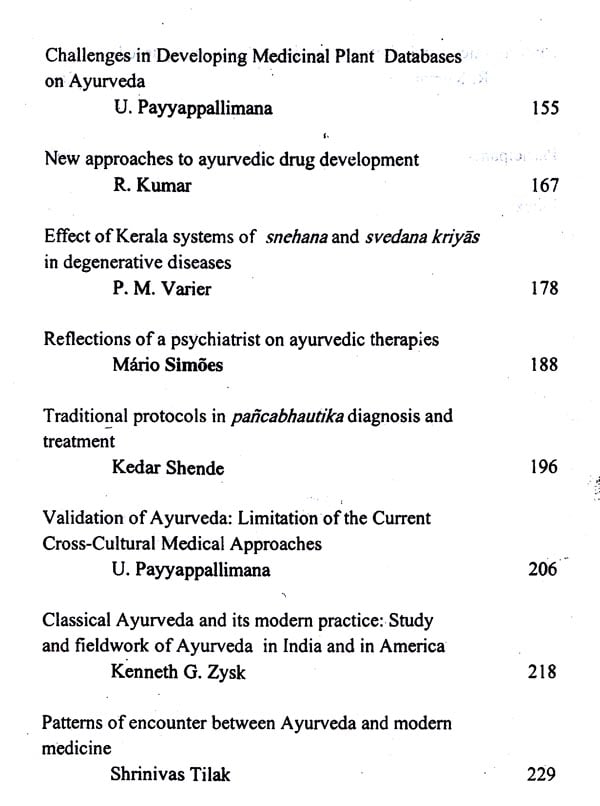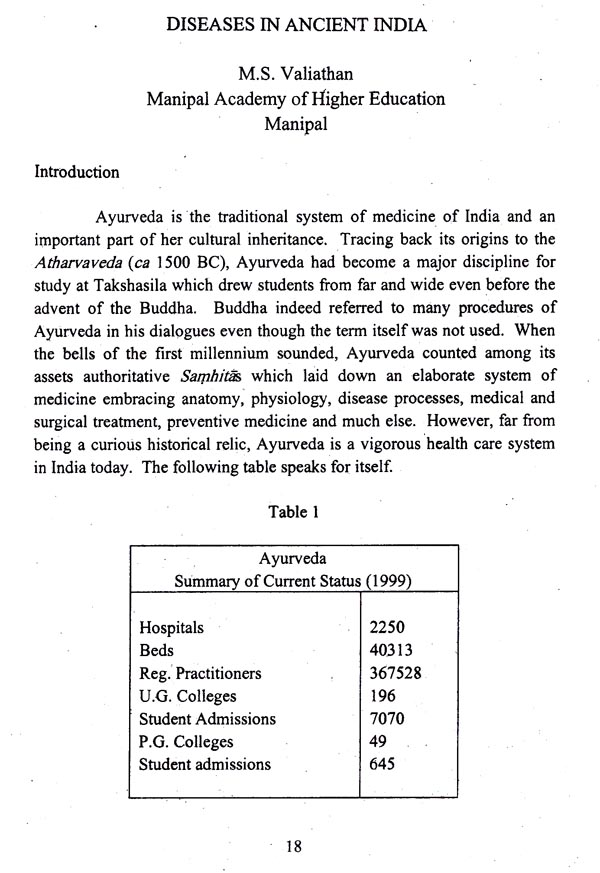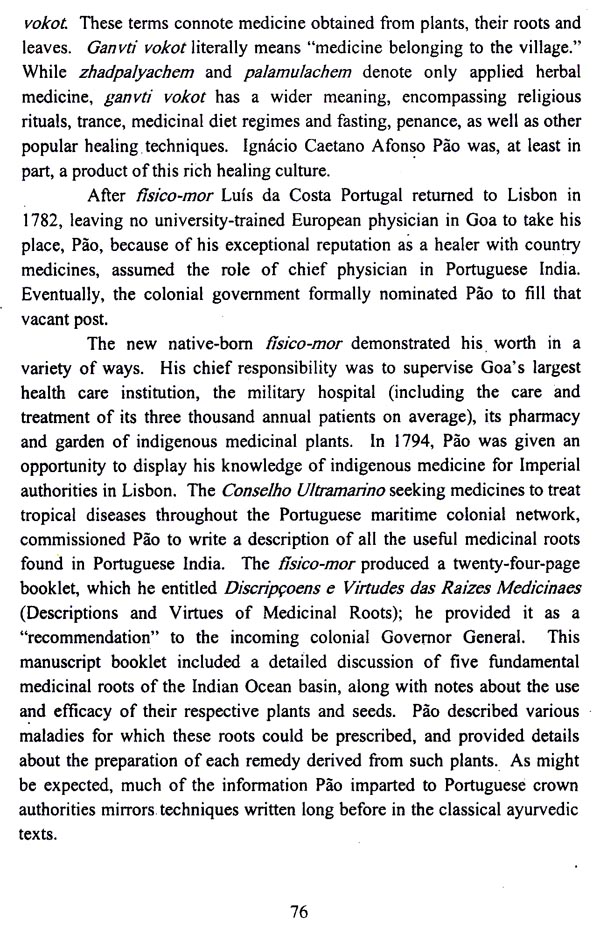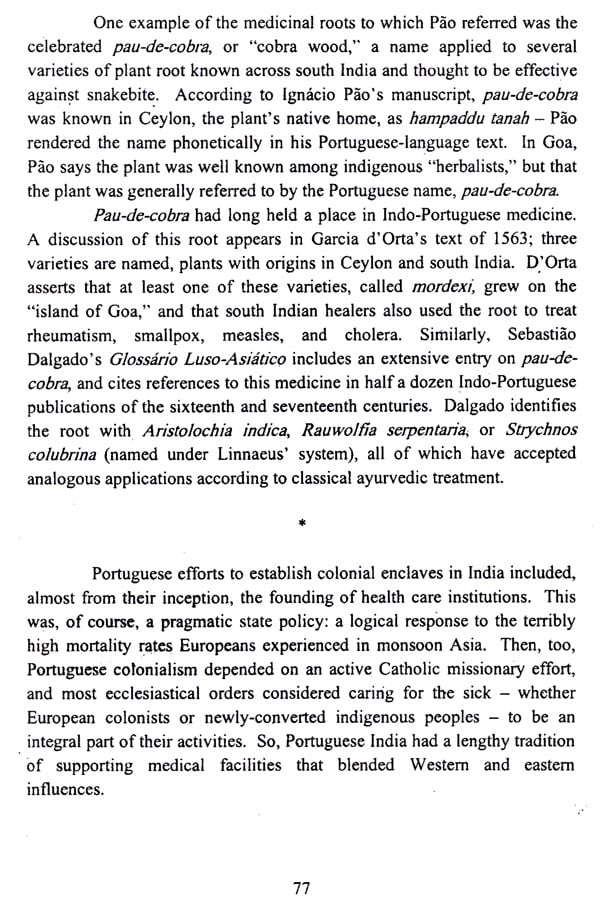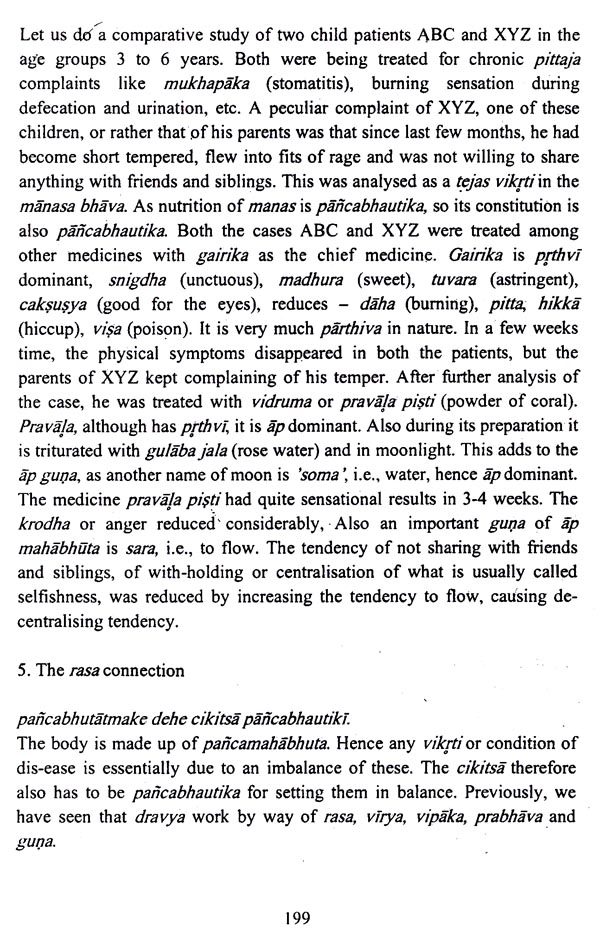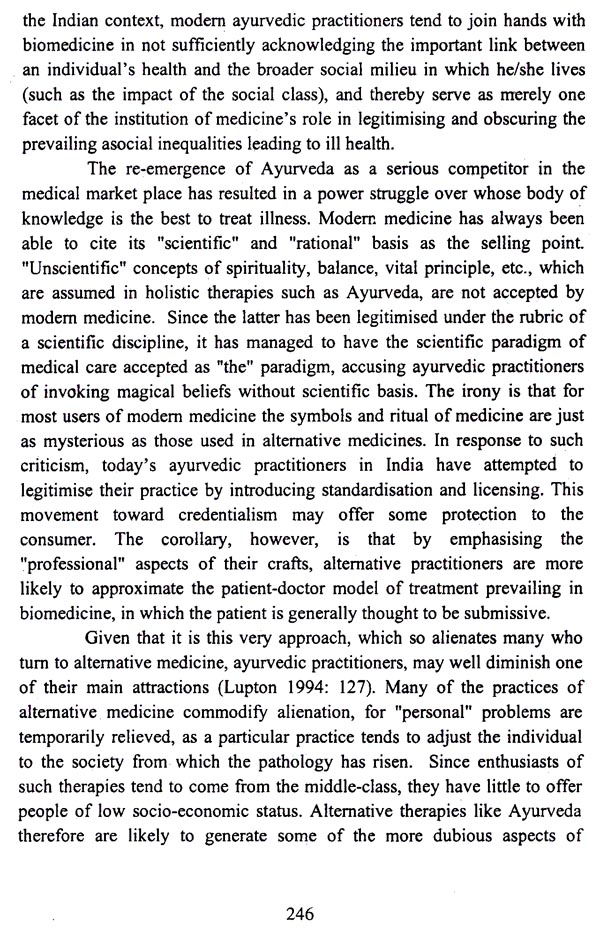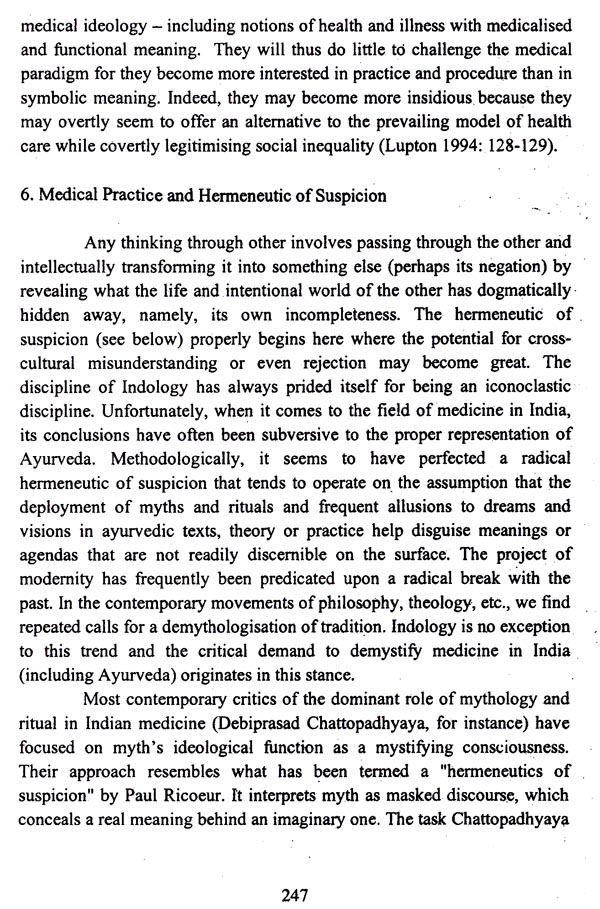
Ayurveda at the Crossroads of Care and Cure
Book Specification
| Item Code: | NAR887 |
| Author: | A. Salema |
| Publisher: | Centro De Historia de Alem-Mar |
| Language: | English |
| Edition: | 2002 |
| Pages: | 289 |
| Cover: | PAPERBACK |
| Other Details | 8.50 X 6.00 inch |
| Weight | 300 gm |
Book Description
This Indo-European Seminar on Ayurveda was held in Portugal -that part of the world which has a long history of contact with India and its materia medica. Yet, Ayurveda is relatively unknown there at present. As such, if this seminar appeared to be a bold enterprise, in fact, it was not so. Indeed, when the Overseas History Centre from The New University of Lisbon, the Orient Foundation, the Ministry for Science and Technology and the Human Ecology Department of the University of Evora' generously welcomed, sponsored and prompted the holding of this seminar, they were extending the best of the Portuguese tradition for transcultural meetings since the 15th century: creating the new, daring the unknown. As the Portuguese thinker, Agostinho da Silva, liked to say "Of the Portuguese, one can expect anything and for such people to exist in the world, from whom anything can be expected, is the most extraordinary thing." I Perhaps the possible is already all done in a way and so, it has significance only as a vehicle for travelling to the impossible.
1. Trans-cultural epistemology: across space and time
Though aware of the critical socio-cultural dimension of the problems raised by the current transplantation of Ayurveda, the scope of this seminar was, at the outset, of cross-cultural medical epistemology. A cross-cultural epistemology inevitably opens varied sets of problems
concerning the possibility of meaning, even if the questions raised by the ayurvedic phrasing go well beyond a strictly linguistic setting. The first and foremost problem in the effort to find footbridges of intelligibility and communication, which is still open for debate, is the one of translatability of Sanskrit terms into European languages. Beyond this, and specifically concerning ayurvedic practice and experience, is the issue of minimising, or fully exploring, the ambiguity and the equivocity arising from the phrasing of the various sides of the subjective healing experience.
Ayurvedic lexicon was an original local production meant for local use. The manipulations to which ayurvedic terms and texts are subjected today displace them forcibly from their context to match our intellectual world, mainly through operations that sometimes overlap: translation and modernisation. Their "dislocation" often erases the milieu, the context and the atmosphere from which the word emerges. This includes the cosmophysical foundations that sustain it, the modes of thought that articulate it, the social interactions that legitimise it and the operations that verify it. Such factors seem to transfer apparently philological questions to other domains. But the translation is always a negotiation of differences. It interrelates supposedly comparable images and experiences of the world; it seeks the passage of the different to the same making them equivalent. This negotiation is naturally conditioned by the philosophical a priori - an optimised formula of philosophical prejudices - of the translator. The translation, while pretending to mirror a language in the light of another language, gives shape to the translator's iconic experience: amoebas, enzymes, albumen, hysteria, etc., tinge the initial text with a different colour, far across its original time and space.
Thus, the medical metalanguage will always raise insoluble problems of translation that appear in the multiplication of non translated words. Because science is an institutionalised practice conditioned by a set of conventional rules liable to change according to the need of the hour, its unquestioned investment as a metarule for all other practices is the third problem we have to deal with. Then, we confront problems of methodology and of technology when we try to find out what in Ayurveda corresponds (or responds) to the same technology in vogue with the bio-medical science,or decide with what instruments this transportation can be realised and coherence fixed. We should rather enquire about those aspects that do not correspond to any methodology or to any transposable technology within the bio-medical paradigm, and understand, at the core, to which epistemological paradigm these basic methodologies respond.
Moreover, before any kind of meeting between different epistemological paradigms, with their different sets of practices and experiences - often mutually incommensurable -, a vast space for their coming together has to be created. In which way is it possible to welcome, receive, invite, or import alien medical paradigms? What are the required conditions? Conversely, in which way is it possible, or convenient, to offer, transpose, decant or export one medical paradigm into an alien one? Since the transcultural movement of the day enables, or almost forces, the meeting of different health systems, it urges to find a zone within which they may bridge their gap and intertwine their efficacies for care and cure. We can observe that this movement takes different directions - seldom complementary in their opposition - which need to be harmonised:
the reception of traditional knowledge by scientific technological knowledge
the exportation of scientific technological knowledge to traditional knowledge
the reception of scientific technological knowledge by traditional knowledge
the exportation of the traditional knowledge into the scientific technological knowledge
Sometimes these movements give rise to encroachment, sometimes to entanglement, sometimes to exchange, but rarely to coincidence. Despite and against such basic restrictions, a wide space should yet be open for the confrontation of idiosyncratic paradigms and technologies. Actually we see in the classical ayurvedic texts that symposia and controversies have always been the norm. They were however devoid of the ambition to silence all contention imposing an opinion on the other with the contest of a proof. The ayurvedin knew that proofs - any proof, is a partial and biased view, easily replaced by another that would testify the fact otherwise. Across the millennia, the words punarvasu addressed the sages of yore assembled for one of such conference, still stand relevant
